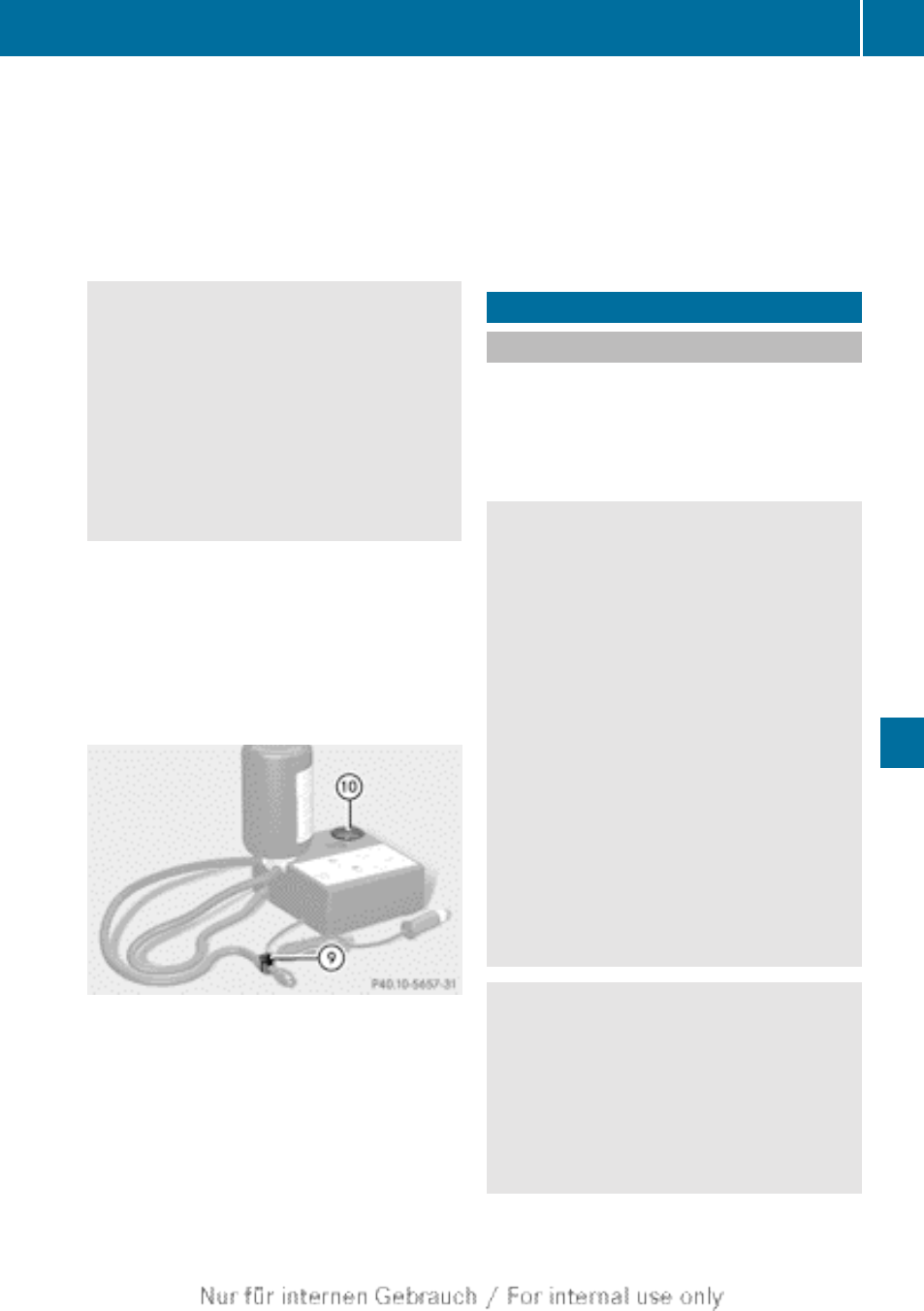Battery (vehicle), Important safety notes, Breakdown assistance – Mercedes-Benz 2013 GL Class User Manual
Page 383

to the instrument cluster in the driver's
field of vision.
X
Stop after driving for approximately ten
minutes and check the tire pressure with
the tire inflation compressor.
The tire pressure must now be at least
130 kPa (1.3 bar/19 psi).
G
WARNING
If the required tire pressure is not reached
after driving for a short period, the tire is too
badly damaged. The tire sealant cannot repair
the tire in this instance. Damaged tires and a
tire pressure that is too low can significantly
impair the vehicle's braking and driving
characteristics. There is a risk of accident.
Do not continue driving. Contact a qualified
specialist workshop.
X
Correct the tire pressure if it is still at least
130 kPa (1.3 bar/19 psi) (for the values,
see the Tire and Loading Information
placard on the B-pillar on the driver's side
or tire pressure table on the fuel filler flap).
X
To increase the tire pressure: switch on
the tire inflation compressor.
E
Pressure release button
F
Pressure gauge
X
To reduce the tire pressure: press
pressure release button E on the filler
hose.
X
Stow the tire sealant bottle and the tire
inflation compressor.
X
Drive to the nearest qualified specialist
workshop and have the tire changed there.
X
Have the tire sealant bottle replaced as
soon as possible at a qualified specialist
workshop.
X
Have the tire sealant bottle replaced every
four years at a qualified specialist
workshop.
Battery (vehicle)
Important safety notes
Special tools and expert knowledge are
required when working on the battery, e.g.
removal and installing. You should therefore
have all work involving the battery carried out
at a qualified specialist workshop.
G
WARNING
Work carried out incorrectly on the battery
can, for example, lead to a short circuit and
damage your vehicle's electronic system. This
can disrupt driving safety systems such as
ABS (anti-lock braking system) or ESP
®
(Electronic Stability Program).
R
If ABS malfunctions, the wheels can lock
during braking. This limits the steerability
of the vehicle when braking and the braking
distance may increase. There is a risk of
accident.
R
If ESP
®
malfunctions, the vehicle will not be
stabilised if it starts to skid or a wheel starts
to spin. There is a risk of accident.
You should therefore have all work involving
the battery carried out at a qualified specialist
workshop.
G
WARNING
Electrostatic build-up can lead to the creation
of sparks, which could ignite the highly
explosive gases of a battery. There is a risk of
an explosion.
Before handling the battery, touch the vehicle
body to remove any existing electrostatic
build-up.
Battery (vehicle)
381
Breakdown assistance
Z